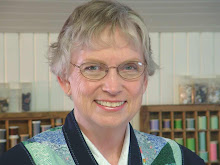I have to agree with these students.
After all, with most garments being manufactured in low-labour-cost countries, the cost is quite reasonable. And, especially for knitted garments, the existence and use of knitting machines really help to minimize the costs.
So, if I'm not saving money or time, what is in it for me?
Here is how I usually answer this question:
- By making it myself, I can make it fit my unique and non-standard body shape.
- I can express my own creativity.
- I get a sense of accomplishment - I created something out of my own two hands.
- I have something to do in time periods that are otherwise wasted - I can do productive knitting while watching tv, waiting for an appointment, while hubby or the transit driver is driving me somewhere, and so on.
For me, of course, the real pleasure is in the "doing", seeing something develop right before my eyes.
How do you respond to this type of question?
Thanks
Judy
Judy Obee
My Knitting Website





